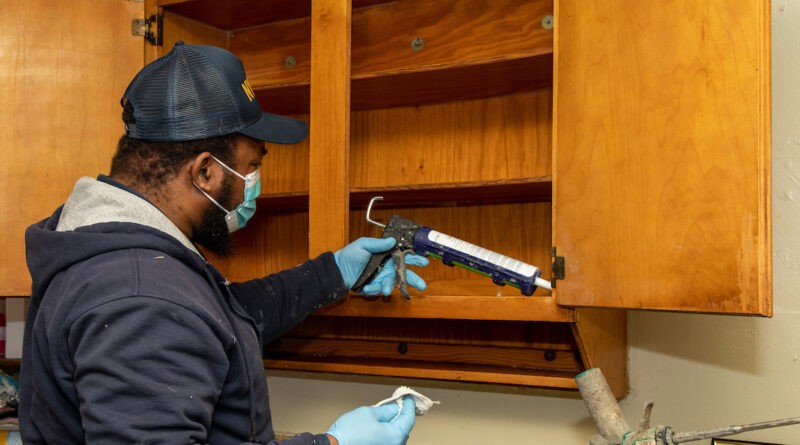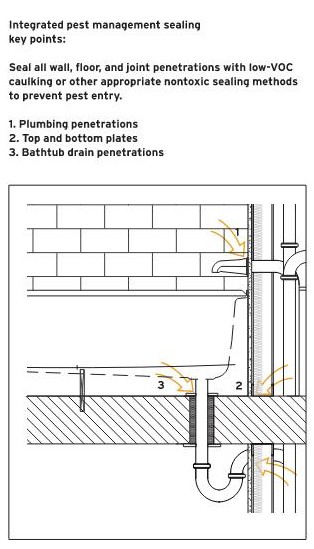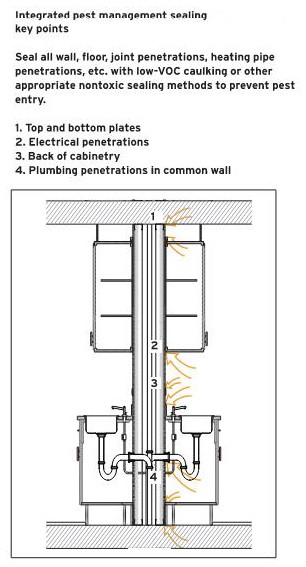Integrated Pest Management (IPM)

Description
- Pest and waste management at NYCHA properties involves the implementation of strategies and practices to control and mitigate the presence of pests and effectively to manage waste disposal within the premises. This encompasses measures such as regular inspections, pest control treatments, proper waste segregation, recycling initiatives, and efficient garbage disposal methods. The benefits of effective pest and waste management extend far beyond mere cleanliness; they contribute significantly to the safety and well-being of residents. By minimizing the presence of pests such as rodents, insects, and other disease vectors, these efforts reduce the risk of disease transmission and allergic reactions among residents. Moreover, proper waste management not only ensures a cleaner environment but also helps prevent environmental contamination and the spread of harmful pathogens. Additionally, implementing sustainable waste management practices can lead to cost savings, improved community hygiene, and enhanced overall quality of life for residents. Overall, investing in pest and waste management at residential properties not only promotes a healthier living environment but also fosters a sense of security and satisfaction among residents.
- Exterior pest management at NYCHA properties involves implementing best practices for trash receptacles at NYCHA properties, which involves ensuring proper placement, maintenance, and management of waste bins. This includes strategically locating receptacles in easily accessible areas, providing adequate signage for waste segregation, regularly emptying bins to prevent overflow and pest infestation, and implementing recycling programs to minimize waste. The benefits of adhering to these practices are manifold, particularly in terms of promoting the health and safety of residents. By maintaining clean and organized waste disposal areas, the risk of accidents, such as slips and falls, is reduced. Additionally, proper waste management helps to control the proliferation of pests, such as rodents and insects, which can carry harmful diseases to residents. Furthermore, recycling initiatives not only contribute to environmental sustainability but also foster a sense of community responsibility and pride among residents. Overall, adhering to best practices for trash receptacles not only enhances the aesthetics of residential properties but also significantly contributes to the overall well-being and safety of residents.
- Interior pest management at NYCHA properties involves a multifaceted approach, including regular inspections, preventive measures, and targeted treatments. These protocols should focus on identifying and addressing potential entry points for pests, such as cracks and gaps in walls or floors, as well as implementing sanitation practices to minimize attractants like food crumbs or standing water. Utilizing non-toxic or low-toxicity pest control methods, such as baits or traps, can help reduce the risk to residents and pets while effectively managing pest populations. By prioritizing sustainable and eco-friendly pest control methods, opportunities arise for reducing environmental impact and enhancing overall community well-being.
Baseline
- Comply with the HUD Agreement, which mandates the implementation of IPM principles and daily inspections; and mandates NYCHA store waste, including recyclables in pest-resistant containers until removed from the site or staff remove trash from site at least once per day. [PACT]
- Exterior IPM
- Use of porous materials that allow drainage while stopping rodent and pest infiltration.
- Use metal screens in plantings that don’t provide continuous ground cover.
- Provide adequate space and capacity for trash receptacles and waste containers. If a Property currently does not receive curbside trash removal from the Department of Sanitation (“DSNY”), the Property may not convert to curbside removal. [PACT]
- Dispose of waste promptly. [SA]
- Minimize the use of toxic pesticides. [SA]
- Design landscaping to preserve clear sightlines and minimize the potential to host pests. [CCG]
- Interior IPM
- Seal all wall, floor, and joint penetrations with low-VOC caulk or other non-toxic methods (window screens, door sweeps, metal plates).
- Install rodent- and corrosion-proof material (i.e., copper, or stainless-steel mesh or rigid metal cloth) for openings large than 1⁄4 inch.
- Seal entry points under kitchen and bathroom sinks. These items will provide the added benefit of sealing air leaks and will save energy and increase tenant comfort.
- Educate residents on the Integrated Pest Management Toolkit. [COMPMOD] [SA]
Stretch
- Adopt a personalized IPM action plan for each development, which includes putting wire mesh in structural holes to keep rats out; sealing window wells; putting gravel, bark chips, or wire mesh in raised beds. [SA]
Strategies

Optimize Performance, Operation & Maintenance of Buildings, Systems & Assets
Sustainability AgendaCommercial BathroomsCommunity CentersCommercial KitchensEntrywaysConnected Communities
Last Updated on October 10, 2024 at 2:06 pm



















